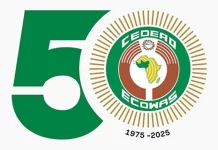
In view of the Central Bank of Ghana’s war on the microfinance sector and public outcry on the industry in some parts of the country, the popularity of microfinance space as a means of financial intermediation for the informal sector has waned.
This would be avoided if the operators were more professional and conducted their business in an ethical manner, but the very attitude of some operators has brought the industry to its knees in recent past.
The Bank of Ghana (BOG) has vowed to be more stringent in its regulatory oversight of microfinance Institutions (MFIs), even as the controversy surrounding its withdrawal of ‘’approval in principle’’ for 70 of them rages on.
Earlier this month, the Central Bank refused to approve the operating license for 70 microfinance institutions and one money-lending company in the country.
According to the Central Bank, the affected institutions were unable to meet the mandatory requirements precedent to the issuance of a final license, after exhausting their six-month ‘’approval in principle’’ grace period.
Hence, from this angle and other recent developments in the sector I deem it important to explore this topic ‘’microfinance: a necessary evil?”.
The Microfinance sector in Ghana
The concept of microfinance is not new in Ghana.
Traditionally, people have saved with and taken small loans from individuals and groups within the context of self-help to start business, farming ventures or acquiring property.
Available evidence also suggests that the first Credit Union in Africa was established in Northern Ghana in 1955 by Canadian Catholic Missionaries.
Susu, which is one of the current microfinance methodologies, is thought to have originated in Nigeria and spread to Ghana in the early 1990s.
Ghana over the past 2 decades has witnessed a dynamic and fast growing economy, with an emerging microfinance industry.
Ghana is amongst the countries in Sub-Sahara Africa with lowest levels of financial intermediation.
The demand of credit for the expanding economy far outstrips supply.
Ghana has almost 568 microfinance companies (Bank of Ghana, 2015), categorizing the sector into Tier-2 for deposit taking and Tier-3 for non-deposit taking institutions.
Ghana’s microfinance industry is more diffused than other markets in the region.
It is led by the Rural and Community Banks (RCBs) in terms of outreach, a position that is increasingly threatened by the emergence of high growth Savings & Loans Companies (S&Ls), whose legal form is that of a Non Banking Financial Institution (NBFI).
Since the mid 1990’s the commercialization of MFIs has gained importance with the mainstreaming of microfinance and its institutions into the financial sector.
An evil?
In 2013, the microfinance sector suffered a’’ liquidity crunch’’ leading to over-indebtedness, resulting in collapse of some of the firms in the industry.
The crisis in the sector left most clients losing their savings and investments and many workers losing their jobs.
Similarly, some individuals and small-to-medium sized businesses, in recent past, have lost trading capital and investments.
In recent times, the nemesis of DKM Microfinance and several negative developments in the sector, particularly in Sunyani, have cost people their life-savings, and livelihoods have been destroyed. Hence the sector has lost some credibility and confidence of the Ghanaian populace.
A neccessity?
Nevertheless, these abuses of the industry principles does not make microfinance institutions an entirely crooked venture.
Access to financial services is imperative for the development of the informal sector, and also helps to mop up excess liquidity through savings that can be made available as investment capital for national development.
The microfinance industry has emerged as one of the most interesting financial delivery innovations.
It is traditionally seen as a poverty reduction tool and an instrument to support economic development, but increasingly, it is also recognized as a valuable financial service and a good business opportunity at the ‘’base of the pyramid’’: a significant number of MFIs across the world have demonstrated that it is possible to reach out to the poor and to be profitable at the same time.
Opportunities in the sector
Truly, microfinance in Ghana is just beginning to emerge as a viable, prosperous and growing industry. Of those living below the poverty line, the majority are not served by the formal financial system, producing a massive need for microfinance.
Ghana represents the regional gold standard for political and economic development with GDP per capita of only USD 1,400.
In spite of significant demand, the microfinance industry has been slow to take hold in Ghana’s financial sector due to numerous challenges.
Political and economic stability in Ghana have allowed individual business leaders, civil society agencies and government regulators to lay foundations to support the microfinance industry’s growth.
Several local and international microfinance networks, such as Ghana Microfinance Institution Network (GHAMFIN) and Millennium Development Authority (MiDA), have entered these markets attracted by the emerging supportive framework and demonstrated market demand.
These networks often bring with them years of industry expertise, highly skilled human resources, proven growth strategies and access to meet the industry’s growth projections.
There undoubtedly exists ample opportunity for investment in both financially lucrative and socially impactful institutions.
Ghana’s average annual GDP growth for the last five years is above 5%.
Real GDP for the past 2 years has declined and 2015 GDP is estimated to grow at rate of 4%, driven by falling crude oil and gold prices.
The forecast of the Ministry of Finance is that real GDP will grow at 5.4% in 2016.
About 70% of the countries’ 26 million population are unbanked (Ghana Association of Microfinance Companies). Significant size of the population still lives below the international poverty line.
The level of financial intermediation by the banking sector is low, and only small size of the population has access to banking facilities.
Given the high levels of poverty, microfinance could play an important role in providing financial services to the majority of Ghana’s population.
Estimates of the potential demand for microcredit is very high.
The sector has grown rapidly in recent past years; nevertheless, the industry is still ill-equipped to satisfy demand.
The increase in formal banking infrastructure has remained largely out of reach for the poor.
This leaves the majority of the population dependent on informal sources such as unlicensed money lenders and credit associations.
Regulatory framework
The Bank of Ghana regulatory framework for MFIs is not as advanced as it is in other West African Countries, like Nigeria.
In fact, it is recommended that Ghana should study the applicability of the Nigerian microfinance policies to its jurisdiction since that market is more mature.
Although there is a vibrant microfinance market in the country, there is currently no separate law for the microfinance industry.
Formal MFIs are subject to the rules and regulations set by the Bank of Ghana in relation to deposit taking and non-depositing taking financial institutions (so- called NBFIs).
Way Forward
Growth drivers for the microfinance sector depends on GDP projections, population growth , new products, technology, the entrance of international players and transformation of NGO’s into for-profit institutions.
The threats are poor infrastructure, political risk, economic crisis (weak macro-economic variables), poor corporate governance and the ability to find, afford, train and retain high quality human resources.
The opportunity in the MFI industry is unparalleled relative to other industries in the financial sector.
To sum up, MFIs seem indispensable in the Ghanaian context looking at the prevailing economic and financial conditions.
What is needed is effective regulatory approach to ensure sanity in the sector and thereby address the recent reported challenges.
It is recommended that the Central Bank creates an independent and separate entity (apex body) that will run the affairs of this sector and also sensitize the various stakeholders of the industry in restoring trust and confidence in the sector.
Greater governmental and Bank of Ghana’s effort is necessary to achieve this.
Patrons of microfinance services and the general public are also to ensure vigilance so as not to fall for unrealistic offers from those unscrupulous institutions.
This way, our society will see the benefits of the microfinance sector as a tool for poverty reduction and economic liberation of the poor and unbanked.
By: Wencelav Atule Safrega
The writer is the head of Corporate Finance and Research at TTL Capital Limited, a Fund Management and Investment Advisory Firm in Accra.
Email: wencelav.safrega@ttlcapital.com; www.ttlcapital.com.




























